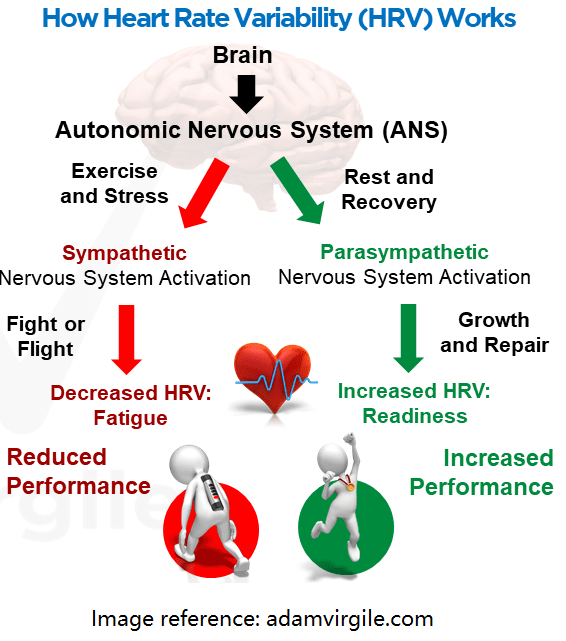
We like to stay up to date with technology and research, and that’s why we use HRV. Seeing as it’s a big part of most of our programs, we thought we should give you some insight into what it actually is and how we use it!
HRV in History
Using pulse as a measure of health and disease has continued since about 800BC where it was used in Chinese and Indian medicine.
HRV goes into a little more detail than just the pulse regularity.
It might sound like a new concept, and definitely exploded into both the athletic and rehab world over the last few years, but in fact, it was first recorded in the 1800s. It started to become more recognised when it was found to be associated with foetal distress. Since, most of its use has been within clinical cardiology and research, but now its in the hands of allied health professionals, sports coaches and athletes.
But what is it?
Ok, we all know “Heart Rate” – How many times your heart beats in one minute.
But our heart isn’t a clock or a metronome. The timing of the beats is not consistent.
HRV is literally the variation of time between consecutive heartbeats. The measurement is expressed as a whole number after some calculations behind the scene!
It is a reflection of the factors that influence the rhythm of the heart.
 OK, let’s dig a bit deeper into the physiology of it…
OK, let’s dig a bit deeper into the physiology of it…
Your heart rate variability reflects the state of your autonomic nervous system.
The autonomic nervous system (ANS) is the communication pathway for unconscious bodily functions such as the heart rate, as well as others like breathing rate, pupil dilation and digestion.
The ANS is divided into two main branches – the sympathetic (SNS – fight or flight response) and the parasympathetic (PNS- rest and repair).
So, when the nervous system receives information from its environment it responds. The response is to either to upregulate the sympathetic or parasympathetic activity. This is what creates the time difference between each beat – the interplay between SNS and PNS.
The environment can be…. Anything! From serious stress (where you can actually feel that your heart rate has increased) to just breathing in then out!
That’s what it is…. But what does that mean?
The relationship between the current heart rate variability, day to day variation as well as the actual heart rate can provide insight into the state of the body by the ‘health’ of the nervous system.
HRV can be used medically, indicating disease. Or it can be used preventively, as a measure of the physical and mental capacity you have available to deal with stressors.
In general, although there are exceptions, a high HRV represents a high level of heart rate fluctuation, indicating that the body is responding well to environmental stimulus. It is functioning healthily, demonstrating adaptability and resilience.
If the HRV is low this suggests the nervous system is lacking flexibility and it is struggling to respond appropriately to any environmental stimuli.
Low HRV
So, if low HRV is associated with increased Sympathetic activity, and Sympathetic activity increases heart rate and breathing etc, you may have concluded correctly that sounds pretty stressful, literally.
When the HRV is low, the body is not coping so well with the stress. It is not healthily bouncing between stimulated and relaxed states.
Low HRV is associated with numerous health conditions such as chronic fatigue, chronic pain, depression, fibromyalgia and irritable bowel syndrome just to name a few.
We can also monitor the pattern to see of HRV is trending down. This would indicate decreasing capacity and is, therefore, a sign of stress tolerance decreasing.
So what do you do if you are able to spot this trend and take action?? You start to take some rest breaks, practice mindfulness, breathe, manage your stress and generally just take it a bit easier. Your body will thank you for the break and the rest and repair will allow your body to start to respond to stimuli again the way it previously would.
HRV and Specialised Health
At Specialised Health we have been incorporating HRV measurements into our rehab programs for chronic fatigue, mental health and sometimes chronic pain since 2017.
It gives us an insight into whether the program is helping or hindering, provides some direction on exercise prescription and if there are other lifestyle factors needing to be addressed.
Hopefully, that has all made sense. Shoot us a question if not!

Biara Webster
Exercise Physiologist and Writer/Content Manager
Why not Follow Us?
References
- Virgile, A., (June 2018), Heart Rate Variability (HRV) in Sport: A Review of the Research
- Low, P. (December, 2019), Overview of the Autonomic Nervous System
- McCarty, R., (2015), Science of the Heart, Vol 2., Heart Math Research Centre
- U. Rajendra (2006), Heart rate variability: a review, Med Bio Eng Comput, 44:1031-1051, DOI 10.1007/s11517-006-0119-0



